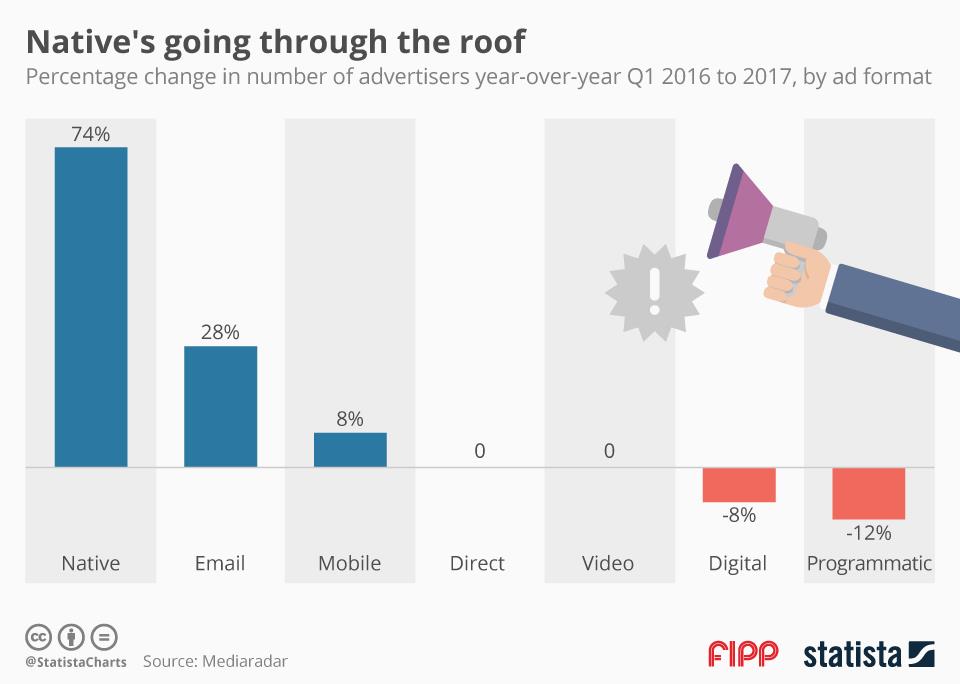Judging by the numbers, consumers haven’t come out of the fake news woods yet. According to Fipp (citing data from Mediaradar), native advertising is going through the roof. In fact, the number of brands flocking to native advertising is up 74% over Q1 of last year.

Why is this a problem? Isn’t making room for native ads in your publication a viable way to secure new revenue?
Sure, but so is renting your ground floor lobby to a pawn shop. And neither one is a good idea for the long-term strength of your brand. For starters, there’s an incredibly thin – sometimes invisible – line between native ads and fake news.
“I can only laugh when publishers bemoan the growth of fake news and then in the same breath gush about how native advertising is the future of digital media,” wrote Jim Weber early this year on LinkedIn.
Advertorials have been around for an age; that’s nothing new. And so has the damage to brands and publishers that participate. Which is why I just don’t understand how this continues to be so popular. What about reader trust? And sharing real stories? Especially in this age when trust in media brands is at historic lows.
“Fake news is in fact just a natural extension of native advertising,” he continues. “’Branded content’ is a piece of propaganda that an advertiser tries to convince readers is the truth by paying publishers a fee. So it was only a matter of time until scam artists reverse engineered this process by creating content people want to believe and making money off it via Google AdSense.”
There was some hope late last year– given the consumer backlash – that fake news was in fact helping kill off native advertising. It seems that publishers and the brands that place native ads have not yet decided that the risk to their reputation is too great.
Even though publishers love the revenue stream, and advertising partners love the readership base they can access, the readers are the ones who will ultimately decide. As they become more discerning and less likely to bite, brand trust erodes and consumers notice. And that’s a huge cost to bear.
